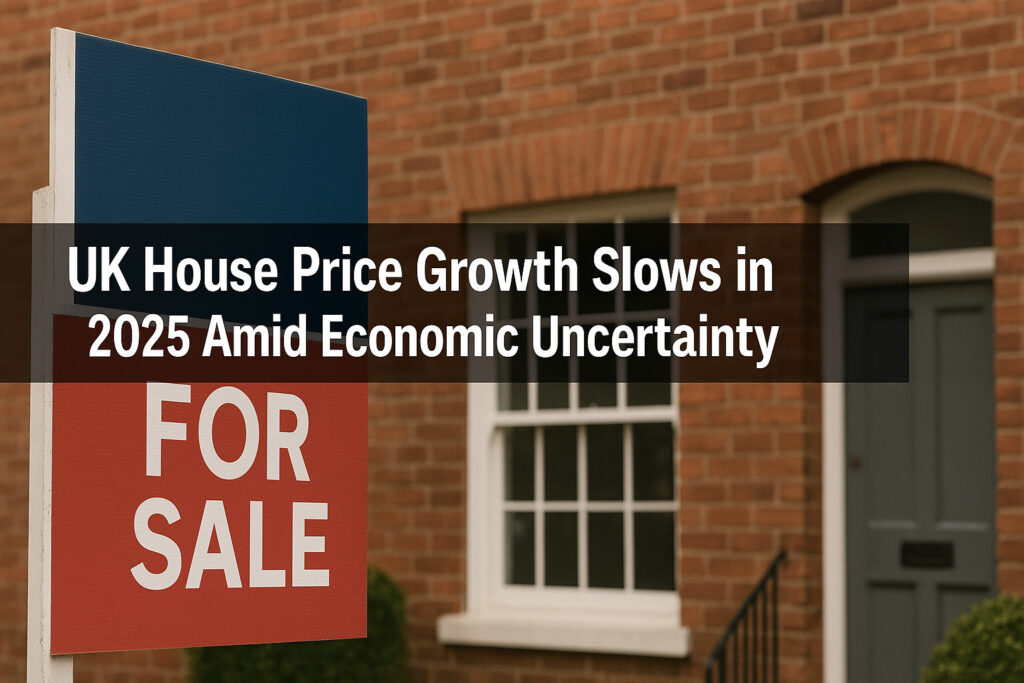Mortgage Market Faces Slowdown Ahead of Stamp Duty Deadline
The UK mortgage market has shown clear signs of cooling in recent months. Mortgage approvals have dipped significantly, reflecting a broader trend among lenders and buyers amid rising interest rates and the end of temporary government incentives such as the stamp duty holiday.
This shift marks a key turning point in the housing market’s post-pandemic recovery phase.
According to the latest data from the Bank of England, net mortgage approvals fell to 55,200 in the most recent reporting period—down from 60,000 the month prior. This downward trend coincides with the final approach to the revised stamp duty deadline and rising inflation pressures affecting household budgets.
Why Mortgage Approvals Are Falling: Key Influencing Factors
Interest Rate Rises Curb Borrowing Power
The Bank of England has increased its base rate multiple times since late 2021 to combat inflation, which has directly impacted mortgage affordability.
Lenders have responded by tightening criteria, reducing loan-to-value (LTV) offerings, and increasing interest rates on fixed and tracker mortgages.
Stamp Duty Holiday Expiry Sparks Market Pullback
The phased end of the stamp duty holiday—introduced initially during the COVID-19 pandemic to stimulate the housing market—has removed a key incentive for buyers.
With the deadline now passed, urgency among homebuyers has declined, leading to a natural drop in demand and, consequently, mortgage approvals.
Cost of Living Crisis Squeezes Buyer Confidence
Surging energy costs, higher food prices, and increased taxation are all weighing on consumer confidence.
Potential buyers, particularly first-time buyers, are growing hesitant to commit to long-term financial obligations, especially with economic uncertainty on the horizon.
Current Mortgage Trends and Buyer Behavior
Shift Towards Fixed-Rate Mortgages
In the face of rising interest rates, more borrowers are opting for longer-term fixed-rate deals. Five- and ten-year fixed products have become particularly attractive, offering borrowers stability during volatile economic periods.
Regional Disparities in Housing Demand
The North and Midlands have seen more stable activity while London and the South East continue to command high property prices.
Buyers in these regions are still active due to relatively affordable pricing and regional investment schemes.
Buy-to-Let Investors Re-Evaluate Portfolios
Landlords and buy-to-let investors are reassessing their portfolios amid higher mortgage costs and stricter regulation.
Some are exiting the market, reducing competition for residential buyers but potentially impacting rental stock availability.
Expert Outlook: What Lies Ahead for the UK Housing Market?
Continued Downward Pressure on Mortgage Approvals
With no significant policy intervention expected in the immediate term, approvals are likely to remain subdued.
The market may find some stability mid-year as inflation eases and the economic outlook becomes clearer, but no significant surge is expected.
Property Prices to Stabilize or Decline
House prices are beginning to plateau and, in some areas, decline. This could benefit first-time buyers and those previously priced out of the market.
However, affordability challenges remain due to increased borrowing costs.
Policy Watch: Potential Government Measures
The housing sector is closely watching for possible government support packages, such as:
First-time buyer tax relief extensions
Shared ownership scheme enhancements
New Help to Buy-style initiatives
These interventions could influence market behaviour if introduced.
Key Metrics at a Glance:
Net Mortgage Approvals:
Current Value – 55,200
Previous Value – 60,000
Trend – Decreasing
Average 2-Year Fixed Rate:
Current Value – 5.54%
Previous Value – 5.38%
Trend – Rising
Average House Price (UK):
Current Value – £282,000
Previous Value – £284,000
Trend – Slight Drop
Inflation Rate (CPI):
Current Value – 3.4%
Previous Value – 3.9%
Trend – Cooling
Bank of England Base Rate:
Current Value – 5.25%
Previous Value – 5.25%
Trend – Flat
Diagram – Mortgage Market Forces (Flowchart Description):
Stamp Duty Holiday Ends
↓
Leads to Reduced Buyer Incentive
↓
Contributes to Lower Mortgage Demand
Separately:
Bank of England Rate Hikes
↓
Cause Higher Mortgage Rates
↓
Which also lowers mortgage demand
Another factor:
Cost of Living Crisis
↓
Causes Reduced Consumer Confidence
↓
Adds further to lower mortgage demand
Finally:
Lower Mortgage Demand
↓
Leads to a Fall in Mortgage Approvals
Strategic Advice for Buyers and Homeowners
First-Time Buyers: Be Prepared, Not Rushed
With reduced competition, first-time buyers may find better deals in the coming months. It’s essential to:
Secure a mortgage in principle early
Improve credit scores
Shop for government-backed schemes like First Homes or shared ownership
Homeowners: Consider Remortgaging Soon
Borrowers nearing the end of fixed-rate deals should explore remortgaging options before further rate increases.
Even small changes in the interest rate can significantly affect monthly payments.
Investors: Focus on Long-Term Yield Over Capital Gain
Buy-to-let investors must consider yield sustainability amid changing regulations and rental market shifts.
Properties in high-demand rental areas outside London offer more reliable returns.
Conclusion: Adaptation Is Crucial in a Cooling Market
The UK housing market is entering a new phase marked by reduced approvals, cautious lending, and buyer hesitation.
While challenges persist, opportunities remain for savvy buyers and investors who adapt to the changing environment.
Staying informed, acting strategically, and securing sound financial advice are the keys to navigating this transitional market.
Read our other Blogs:





